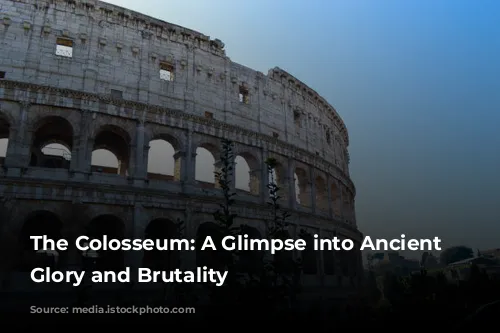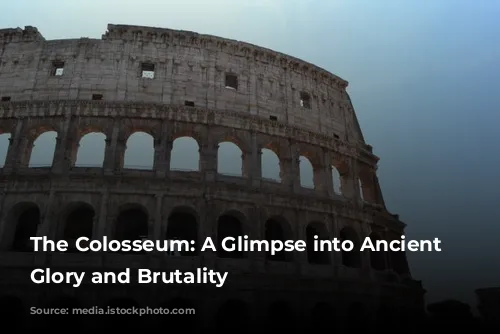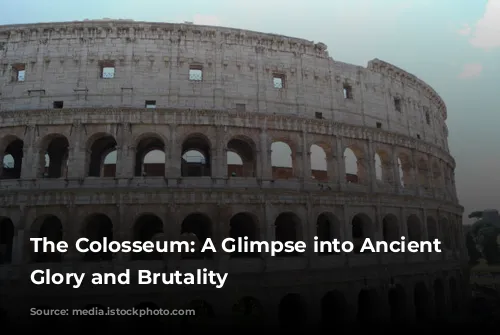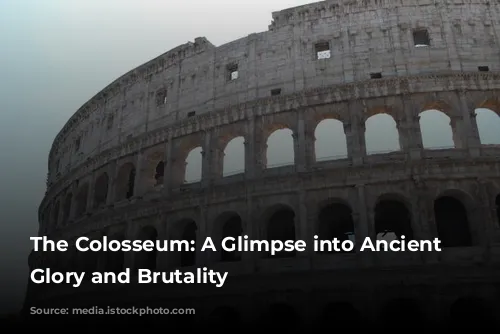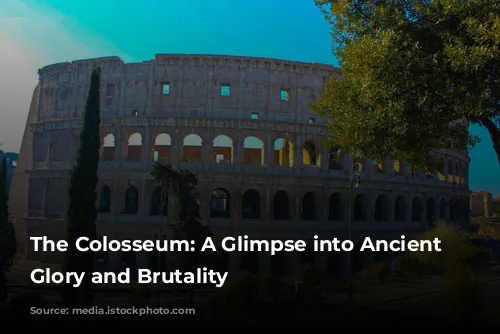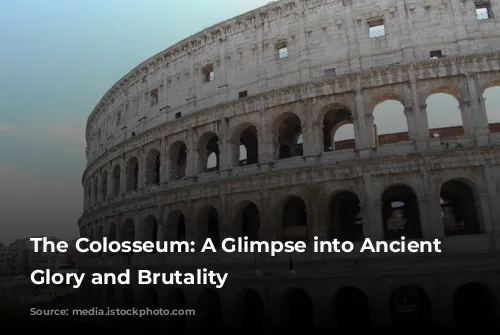The Colosseum, also known as the Flavian Amphitheatre, stands as a testament to the grandeur and power of ancient Rome. This imposing structure, the largest amphitheatre in the Roman world, was initiated by Emperor Vespasian of the Flavian dynasty and completed by his son Titus in 80 A.D.
A spectacular opening ceremony lasting one hundred days showcased a dazzling array of gladiatorial contests, animal hunts, and even mock naval battles. The sheer scale of the event is mind-boggling, with thousands of animals slain and the arena flooded for naval battles.
Why Is It Called the Colosseum?
The name Colosseum first appeared in a prophecy by the medieval monk Bede Venerabilis, who claimed, “Rome will exist as long as the Colosseum does; when the Colosseum falls so will Rome; when Rome falls so will the world.” This prophecy may have been inspired by the nearby statue of Emperor Nero, known as the Colossus, a 35-meter-tall monument now long vanished.
Engineering Marvels: How Was It Built?
The Colosseum is a marvel of Roman engineering, constructed in a mere ten years. This feat was achieved through the masterful use of the arch, a key element in Roman architecture, allowing for the effective distribution of weight. This principle can be seen in other Roman structures like aqueducts.
Imagine the Colosseum in its full glory – completely covered in gleaming travertine stone slabs. Its elliptical shape, designed to accommodate a large audience, housed four levels, each with 80 arches. The second and third levels were adorned with colossal statues.
A Skeleton of Glory: What Remains Today?
Today, we see only the skeleton of this once magnificent arena. The outer brick wall, now missing three-fifths of its circumference, is a stark reminder of time’s relentless passage. Throughout the Middle Ages, the Colosseum was stripped for its materials, contributing to the construction of buildings such as the Barberini Palace, Piazza Venezia, and even St. Peter’s Basilica. The holes in the remaining columns bear witness to this plunder, marking where lead and iron were extracted.
Seating Arrangements and the “Velarium”
The Colosseum had a capacity of 70,000 spectators, who enjoyed a perfect view of the arena thanks to the ingenious design of the tiered seating. This arrangement also reflected the social hierarchy of Roman society, with the upper tiers reserved for commoners and the lower tiers for the elite, including senators, priests, and the emperor himself.
Just like modern sports stadiums, the Colosseum boasted a sophisticated roof system called the “Velarium”. This enormous linen awning was supported by ropes, winches, and wooden poles and could be manipulated by one hundred sailors from the Imperial fleet to shade the audience from the sun.
The Gladiators and the Spectacles
The Colosseum housed a hidden world beneath the arena floor. Two underground levels contained lifts and hoists used to bring gladiators, animals, and elaborate set pieces onto the stage. These mechanisms created dramatic surprise effects, with gladiators and animals emerging from trapdoors in a cloud of dust.
The spectacles in the Colosseum served as a powerful tool of social control. They provided entertainment for the masses, distracting them from political issues while simultaneously showcasing the power of the Emperor and fostering a sense of unity among Roman citizens.
A Glimpse into the Shows
The Colosseum hosted a variety of shows, including “Venationes” – animal hunts where exotic creatures battled each other or faced gladiators. Other events, like the “Silvae”, involved elaborate stage settings that recreated forests, with animals (not always destined for death) roaming freely.
However, the most anticipated event was the gladiatorial combat. The gladiators, often former prisoners of war or impoverished individuals, were welcomed like heroes, parading through the arena before engaging in fierce duels. The crowd, fueled by a fervor reminiscent of modern-day sports fans, eagerly awaited the outcome.
The gladiators, skilled warriors armed with a range of weapons, were divided into different categories, each with their own distinct fighting style. Victory brought fame, fortune, and even passionate admirers, while defeat could lead to a gruesome end.
The Colosseum was not only a place of entertainment but also a stage for public executions. Condemned individuals were thrown to the mercy of ferocious beasts. It is, however, untrue that Christians were systematically slaughtered in the Colosseum.
The Colosseum Today
After the fall of the Roman Empire, the Colosseum fell into disrepair. Its walls sheltered communities, hospitals, and even a cemetery. From the Middle Ages onward, it was a source of building materials, but its historical significance was eventually recognized.
Threatened with demolition, Pope Benedict XIV designated it a sacred monument in honor of the Christian martyrs, placing a cross on its pedestal, a symbol of their suffering. This cross marks the starting point for the Stations of the Cross procession on Good Friday.
Today, the Colosseum remains one of Rome’s most iconic landmarks. It stands as a powerful reminder of a bygone era of glory and brutality. As Charles Dickens wrote, visiting the Colosseum is “seeing the ghost of old Rome floating over the places its people walk in”.

